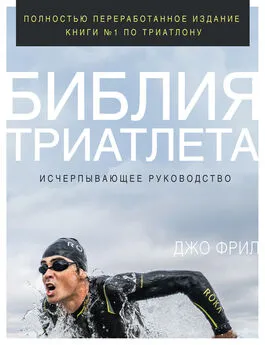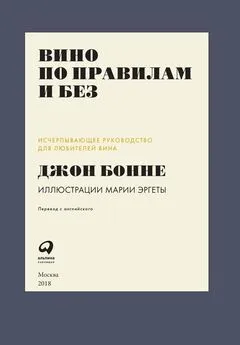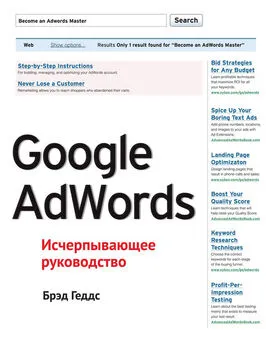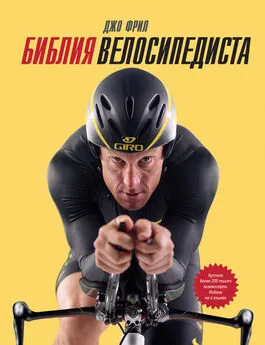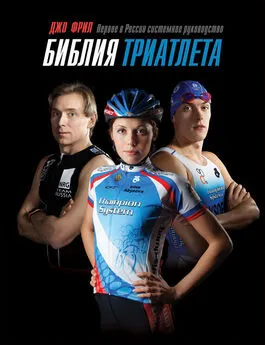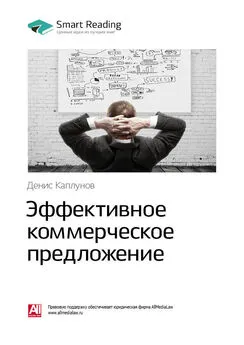Джо Фрил - Библия триатлета. Исчерпывающее руководство
- Название:Библия триатлета. Исчерпывающее руководство
- Автор:
- Жанр:
- Издательство:Литагент МИФ без БК
- Год:2018
- Город:Москва
- ISBN:978-5-00117-314-4
- Рейтинг:
- Избранное:Добавить в избранное
-
Отзывы:
-
Ваша оценка:
Джо Фрил - Библия триатлета. Исчерпывающее руководство краткое содержание
Книга обязательна к прочтению для триатлетов-любителей и профессионалов, а также тренеров по триатлону.
Библия триатлета. Исчерпывающее руководство - читать онлайн бесплатно ознакомительный отрывок
Интервал:
Закладка:
Midgley, A. W., L. R. McNaughton, and M. Wilkinson. “Is here an Optimal Training Intensity for Enhancing the Maximal Oxygen Uptake of Distance Runners?: Empirical Research Findings, Current Opinions, Physiological Rationale and Practical Recommendations”. Sports Medicine (2006) 36 (2): 117–132.
Millet, G. P., A. Groslambert, B. Barbier, J. D. Rouillon, and R. B. Cantan. “Modeling the Relationships Between Training, Anxiety, and Fatigue in Elite Athletes”. International Journal of Sports Medicine (2005) 26 (6): 492–498.
Morton, R. H. “Modeling Training and Overtraining”. Journal of Sports Sciences (1997) 15 (3): 335–340.
Morton, R. H., J. R. Fitz-Clarke, and E. W. Banister. “Modeling Human Performance in Running”. Journal of Applied Physiology (1990) 69 (3): 1171–1177.
Mujika I., J. C. Chatard, T. Busso, A. Geyssant, F. Barale, and L. Lacoste. “Effects of Training on Performance in Competitive Swimming”. Canadian Journal of Applied Physiology (1995) 20 (4): 395–406.
Mujika, I., A. Goya, S. Padilla, A. Grijalba, E. Gorostiaga, and J. Ibanez. “Physiological Responses to a 6-d Taper in Middle-Distance Runners: Influence of Training Intensity and Volume”. Medicine and Science in Sports and Exercise (2000) 32 (2): 511–517.
Seiler, S., and E. Tonnessen. “Intervals, Thresholds, and Long Slow Distance: the Role of Intensity and Duration in Endurance Training”. Sportscience (2009) 13: 32–53.
Shepley, B., J. D. MacDougall, N. Cipriano, J. R. Sutton, M. A. Tarnopolsky, and G. Coates. “Physiological Effects of Tapering in Highly Trained Athletes”. Journal of Applied Physiology (1992) 72 (2): 706–711.
Taha, T., and S. G. Thomas. “Systems Modelling of the Relationship Between Training and Performance”. Sports Medicine (2003) 33 (14): 1061–1073.
Thomas, L., I. Mujika, and T. Busso. “Computer Simulations Assessing the Potential Performance Benefit of a Final Increase in Training During Pre-Event Taper”. Journal of Strength and Conditioning Research (2009) 23 (6): 1729–1736.
Bosquet, L., J. Montpetit, D. Arvisais, and I. Mujika. “Effects of Tapering on Performance: A Meta-Analysis”. Medicine and Science in Sports and Exercise (2007) 39 (8): 1358–1365.
Breil, F. S., S. N. Weber, S. Koller, H. Hoppeler, and M. Vogt. “Block Training Periodization in Alpine Skiing: Effects of 11-Day HIT on VO 2max and Performance”. European Journal of Applied Physiology (2010) 109 (6): 1077–1086.
Buchheit M., and P. B. Laursen. “High-Intensity Interval Training, Solutions to the Programming Puzzle. Part II: Anaerobic Energy, Neuromuscular Load and Practical Applications”. Sports Medicine (2013) 43 (10): 927–954.
Fleck, S. J. “Non-linear Periodization for General Fitness & Athletes”. Journal of Human Kinetics (2011) 29A: 41–45.
Garcia-Pallares, J., M. Garcia-Fernandez, L. Sanchez-Medina, and M. Izquierdo. “Performance Changes in World-Class Kayakers Following Two Different Training Periodization Models”. European Journal of Applied Physiology (2010) 110 (1): 99–107.
Garcia-Pallares, J., L. Sanchez-Medina, L. Carrasco, A. Diaz, and M. Izquierdo. “Endurance and Neuromuscular Changes in World-Class Level Kayakers During a Periodized Training Cycle”. European Journal of Applied Physiology (2009) 106 (4): 629–638.
Hartmann, H., K. Wirth, M. Keiner, C. Mickel, A. Sander, and E. Szilvas. “Short-Term Periodization Models: Effects on Strength and Speed-Strength Performance”. Sports Medicine (2015) 45 (10): 1373–1386.
Issurin, V. B. “Block Periodization Versus Traditional Training Theory: A Review”. Journal of Sports Medicine and Physical Fitness (2008) 48 (1): 65–75.
Issurin, V. B. “New Horizons for the Methodology and Physiology of Training Periodization”. Sports Medicine (2010) 40 (3): 189–206.
Issurin, V. B. “Training Transfer: Scientific Background and Insights for Practical Application”. Sports Medicine (2013) 43 (8): 675–694.
Jeukendrup, A. E., M. K. Hesselink, A. C. Snyder, H. Kuipers, and H. A. Keizer. “Physiological Changes in Male Competitive Cyclists After Two Weeks of Intensified Training”. International Journal of Sports Medicine (1992) 13 (7): 534–541.
Kibler, W. B., and T. J. Chandler. “Sport-Specific Conditioning”. American Journal of Sports Medicine (1994) 22 (3): 424–432.
Kiely, J. “Periodization Paradigms in the 21 stCentury: Evidence-Led or Tradition-Driven?” International Journal of Sports Physiology and Performance (2012) 7 (3): 242–250.
Kirwan, J. P., D. L. Costill, M. G. Flynn, J. B. Mitchell, W. J. Fink, P. D. Neufer, and J. A. Houmard. “Physiological Responses to Successive Days of Intense Training in Competitive Swimmers”. Medicine and Science in Sports and Exercise (1988) 20 (3): 255–259.
Lehmann, M., P. Baumgartl, C. Wiesenack, A. Seidel, H. Baumann, S. Fischer, U. Spori, G. Gendrisch, R. Kaminski, and J. Keul. “Training-Overtraining: Influence of a Defined Increase in Training Volume vs Training Intensity on Performance, Catecholamines and Some Metabolic Parameters in Experienced Middle- and Long-Distance Runners”. European Journal of Applied Physiology and Occupational Physiology (1992) 64 (2): 169–177.
Lehmann, M., H. Wieland, and U. Gastmann. “Influence of an Unaccustomed Increase in Training Volume vs Intensity on Performance, Hematological and Blood-Chemical Parameters in Distance Runners”. Journal of Sports Medicine and Physical Fitness (1997) 37 (2): 110–116.
Munoz, I., R. Cejuela, S. Seiler, E. Larumbe, and J. Esteve-Lanao. “Training-Intensity Distribution During an Ironman Season: Relationship with Competition Performance”. International Journal of Sports Physiology and Performance (2014) 9 (2): 332–339.
Rhea, M. R., S. D. Ball, W.T. Phillips, and L. N. Burkett. “A Comparison of Linear and Daily Undulating Periodized Programs with Equated Volume and Intensity for Strength”. Journal of Strength and Conditioning Research (2002) 16 (2): 250–255.
Rhea, M. R., W. T. Phillips, L. N. Burkett, W. J. Stone, S. D. Ball, B. A. Alvar, and A. B. Thomas. “A Comparison of Linear and Daily Undulating Periodized Programs with Equated Volume and Intensity for Local Muscular Endurance”. Journal of Strength and Conditioning Research (2003) 17 (1): 82–87.
Ronnestad, B. R., S. Ellefsen, H. Nygaard, E. E. Zacharof, O. Vikmoen, J. Hansen, and J. Hallen. “Effects of 12 Weeks of Block Periodization on Performance and Performance Indices in Well-Trained Cyclists”. Scandinavian Journal of Medicine & Science in Sports (2014) 24 (2): 327–335.
Ronnestad, B. R., J. Hansen, and S. Ellefsen. “Block Periodization of High-Intensity Aerobic Intervals Provides Superior Training Effects in Trained Cyclists”. Scandinavian Journal of Medicine & Science in Sports (2014) 24 (1): 34–42.
Ronnestad, B. R., J. Hansen, V. Thyli, T. A. Bakken, and O. Sandbakk. “5-Week Block Periodization Increases Aerobic Power in Elite Cross-Country Skiers”. Scandinavian Journal of Medicine & Science in Sports (2016) 26 (2): 140–146.
Szabo, S., Y. Tache, and A. Somogyi. “The Legacy of Hans Selye and the Origins of Stress Research: A Retrospective 75 Years After His Landmark Brief ‘Letter’ to the Editor of Nature”. Stress (2012) 15 (5): 472–478.
Tonnessen, E., O. Sylta, T. A. Haugen, E. Hem, I. S. Svendsen, and S. Seiler. “The Road to Gold: Training and Peaking Characteristics in the Year Prior to a Gold Medal Endurance Performance”. PLoS One (2014) 9 (7): e101796.
Aubry, A., C. Hausswirth, J. Louis, A. J. Coutts, and Y. Le Meur. “Functional Overreaching: The Key to Peak Performance During the Taper?” Medicine and Science in Sports and Exercise (2014) 46 (9): 1769–1777.
Hausswirth, C., J. Louis, A. Aubry, G. Bonnet, R. Duffield, and Y. Le Meur. “Evidence of Disturbed Sleep and Increased Illness in Overreached Endurance Athletes”. Medicine and Science in Sports and Exercise (2014) 46 (5): 1036–1045.
Lehmann, M., U. Gastmann, K.G. Peterson, N. Bachl, A. Seidel, A. N. Khalaf, S. Fischer, and J. Keul. “Training-Overtraining: Performance, and Hormone Levels, After a Defined Increase in Training Volume Versus Intensity in Experienced Middle- and Long-Distance Runners”. British Journal of Sports Medicine (1992) 26 (4): 233–242.
Lehmann, M., H. Wieland, and U. Gastmann. “Influence of an Unaccustomed Increase in Training Volume vs Intensity on Performance, Hematological and Blood-Chemical Parameters in Distance Runners”. Journal of Sports Medicine and Physical Fitness (1997) 37 (2): 110–116.
Le Meur, Y., A. Pichon, K. Schaal, L. Schmitt, J. Louis, J. Gueneron, P. P. Vidal, and C. Hausswirth. “Evidence of Parasympathetic Hyperactivity in Functionally Overreached Athletes”. Medicine and Science in Sports and Exercise (2013) 45 (11): 2061–2071.
Meeusen, R., M. Duclos, C. Foster, A. Fry, M. Gleeson, D. Nieman, J. Raglin, G. Rietjens, J. Steinacker, and A. Urhausen. “Prevention, Diagnosis, and Treatment of the Overtraining Syndrome: Joint Consensus Statement of the European College of Sport Science and the American College of Sports Medicine”. Medicine and Science in Sports and Exercise (2013) 45 (1): 186–205.
Vesterinen, V., K. Hakkinen, T. Laine, E. Hynynen, J. Mikkola, and A. Nummela. “Predictors of Individual Adaptation to High-Volume or High-Intensity Endurance Training in Recreational Endurance Runners”. Scandinavian Journal of Medicine & Science in Sports (2016) 26 (8): 885–893.
Ali, A., M. P. Caine, and B. G. Snow. “Graduated Compression Stockings: Physiological and Perceptual Responses During and After Exercise”. Journal of Sports Sciences (2007) 25 (4): 413–419.
Ali, A., R. H. Creasy, and J. A. Edge. “Physiological Effects of Wearing Graduated Compression Stockings During Running”. European Journal of Applied Physiology (2010) 109 (6): 1017–1025.
Ali, A., R. H. Creasy, and J. A. Edge. “The Effect of Graduated Compression Stockings on Running Performance”. Journal of Strength and Conditioning Research (2011) 25 (5): 1385–1392.
Areta, J. L., L. M. Burke, M. L. Ross, D. M. Camera, D. W. West, E. M. Broad, N. A. Jeacocke, D. R. Moore, T. Stellingwerf, S. M. Phillips, J. A. Hawley, and V. G. Coffey. “Timing and Distribution of Protein Ingestion During Prolonged Recovery from Resistance Exercise Alters Myofibrillar Protein Synthesis”. Journal of Physiology (2013) 591 (9): 2319–2331.
Berardi, J. M., T. B. Price, E. E. Noreen, and P. W. Lemon. “Postexercise Muscle Glycogen Recovery Enhanced with a Carbohydrate Protein Supplement”. Medicine and Science in Sports and Exercise (2006) 38 (6): 1106–1113.
Berry, M. J., and R. G. McMurray. “Effects of Graduated Compression Stockings on Blood Lactate Following an Exhaustive Bout of Exercise”. American Journal of Physical Medicine (1987) 66 (3): 121–132.
Bossingham, M. J., N. S. Carnell, and W. W. Campbell. “Water Balance, Hydration Status, and Fat-Free Mass Hydration in Younger and Older Adults”. American Journal of Clinical Nutrition (2005) 81 (6): 1342–1350.
Breen, L., A. Philip, O. C. Witard, S. R. Jackman, A. Selby, K. Smith, K. Barr, and K. D. Tipton. “The Influence of Carbohydrate-Protein Co-ingestion Following Endurance Exercise on Myofibrillar and Mitochondrial Protein Synthesis”. Journal of Physiology (2011) 589 (16): 4011–4025.
Читать дальшеИнтервал:
Закладка:
